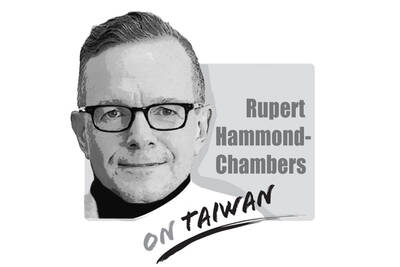Historical, racial legacies
A byproduct of the dispute between Taiwan and the Philippines has been discussion of the concept of “Han chauvinism.”
The term was allegedly coined in 1956 by then-Chinese leader Mao Zedong (毛澤東) as a way to criticize ethnocentrism among Han people in China.
Mao was against Han chauvinism and appropriated the Chinese Nationalist Party (KMT) concept of Zhonghua Minzu (中華民族) as a multi-ethnic nation to distinguish his People’s Republic of China (PRC) from the KMT’s failed Republic of China (ROC) that was also based on the same notion, but which had failed to execute the idea in practice.
It is important to note that the origins and history of Han chauvinism and Chinese nationalism are intricately connected to both the KMT and the ROC.
Indeed, Sun Yat-sen (孫逸仙) was heavily influenced by the ideologies of racial supremacy that were very popular in Europe and North America at the turn of the century. Sun saw in these ideas the basis for a new way to define the Chinese nation and “Chineseness,” with the specific intent of overthrowing the Qing Dynasty.
Sun once said: “In order to restore our national independence, we must first restore the Chinese nation. In order to restore the Chinese nation, we must drive the barbarian Manchus back to the Changbai Mountains. In order to get rid of the barbarians, we must first overthrow the present tyrannical, dictatorial, ugly and corrupt Qing government.”
Interestingly, the Manchus Sun defined as non-Chinese “other” had appropriated elements of traditional Chinese culture to help incorporate annexed peoples such as the Tibetans, the Mongols and the Uighurs into its empire.
It is a supreme irony that today’s PRC and ROC revise history to absent the Manchu’s “foreign” origins so as to both continue this practice of “using culture to build bridges into occupied territories” and to preserve the fantasy of one continuous 5,000-year-old Chinese nation, mimicking the Qing Dynasty’s imperialism by claiming whole swathes of the South and East China seas, not to forget the Indian state of Arunachal Pradesh, as parts of ancient China.
Unfortunately, territorial expansion has been a strong feature of both the ROC and PRC since the mid 1930s, when both the KMT and Chinese Communist Party (CCP) started to engineer claims to former Qing Dynasty imperial holdings and tributary states into their respective platforms.
Despite none of the four main iterations of the ROC Constitution actually citing Taiwan as part of the territory of the Chinese nation, both former president Chiang Kai-shek (蔣介石) and Mao added this into their party doctrines as resolute and permanent tenets.
In the post-war power vacuum, Chiang seized the opportunity to unilaterally annex the nation into the ROC.
Across the Taiwan Strait, the PRC continued this imperial revitalization project by occupying Tibet, East Turkestan and a large part of Mongolia.
When we try to understand then why President Ma Ying-jeou (馬英九 ) claims Taiwanese as descendants of the Yellow Emperor, why CCP officials talk about blood being thicker than water and why the Ma government prioritizes the unity of “one China” above the democratic self-determination of Taiwan, we should remind ourselves that the KMT was founded as, and remains in its core ideology today, a Han chauvinist and deeply racist party of crude nationalists and colonists.
Ben Goren
Taipei
The gutting of Voice of America (VOA) and Radio Free Asia (RFA) by US President Donald Trump’s administration poses a serious threat to the global voice of freedom, particularly for those living under authoritarian regimes such as China. The US — hailed as the model of liberal democracy — has the moral responsibility to uphold the values it champions. In undermining these institutions, the US risks diminishing its “soft power,” a pivotal pillar of its global influence. VOA Tibetan and RFA Tibetan played an enormous role in promoting the strong image of the US in and outside Tibet. On VOA Tibetan,
Sung Chien-liang (宋建樑), the leader of the Chinese Nationalist Party’s (KMT) efforts to recall Democratic Progressive Party (DPP) Legislator Lee Kun-cheng (李坤城), caused a national outrage and drew diplomatic condemnation on Tuesday after he arrived at the New Taipei City District Prosecutors’ Office dressed in a Nazi uniform. Sung performed a Nazi salute and carried a copy of Adolf Hitler’s Mein Kampf as he arrived to be questioned over allegations of signature forgery in the recall petition. The KMT’s response to the incident has shown a striking lack of contrition and decency. Rather than apologizing and distancing itself from Sung’s actions,

US President Trump weighed into the state of America’s semiconductor manufacturing when he declared, “They [Taiwan] stole it from us. They took it from us, and I don’t blame them. I give them credit.” At a prior White House event President Trump hosted TSMC chairman C.C. Wei (魏哲家), head of the world’s largest and most advanced chip manufacturer, to announce a commitment to invest US$100 billion in America. The president then shifted his previously critical rhetoric on Taiwan and put off tariffs on its chips. Now we learn that the Trump Administration is conducting a “trade investigation” on semiconductors which
By now, most of Taiwan has heard Taipei Mayor Chiang Wan-an’s (蔣萬安) threats to initiate a vote of no confidence against the Cabinet. His rationale is that the Democratic Progressive Party (DPP)-led government’s investigation into alleged signature forgery in the Chinese Nationalist Party’s (KMT) recall campaign constitutes “political persecution.” I sincerely hope he goes through with it. The opposition currently holds a majority in the Legislative Yuan, so the initiation of a no-confidence motion and its passage should be entirely within reach. If Chiang truly believes that the government is overreaching, abusing its power and targeting political opponents — then